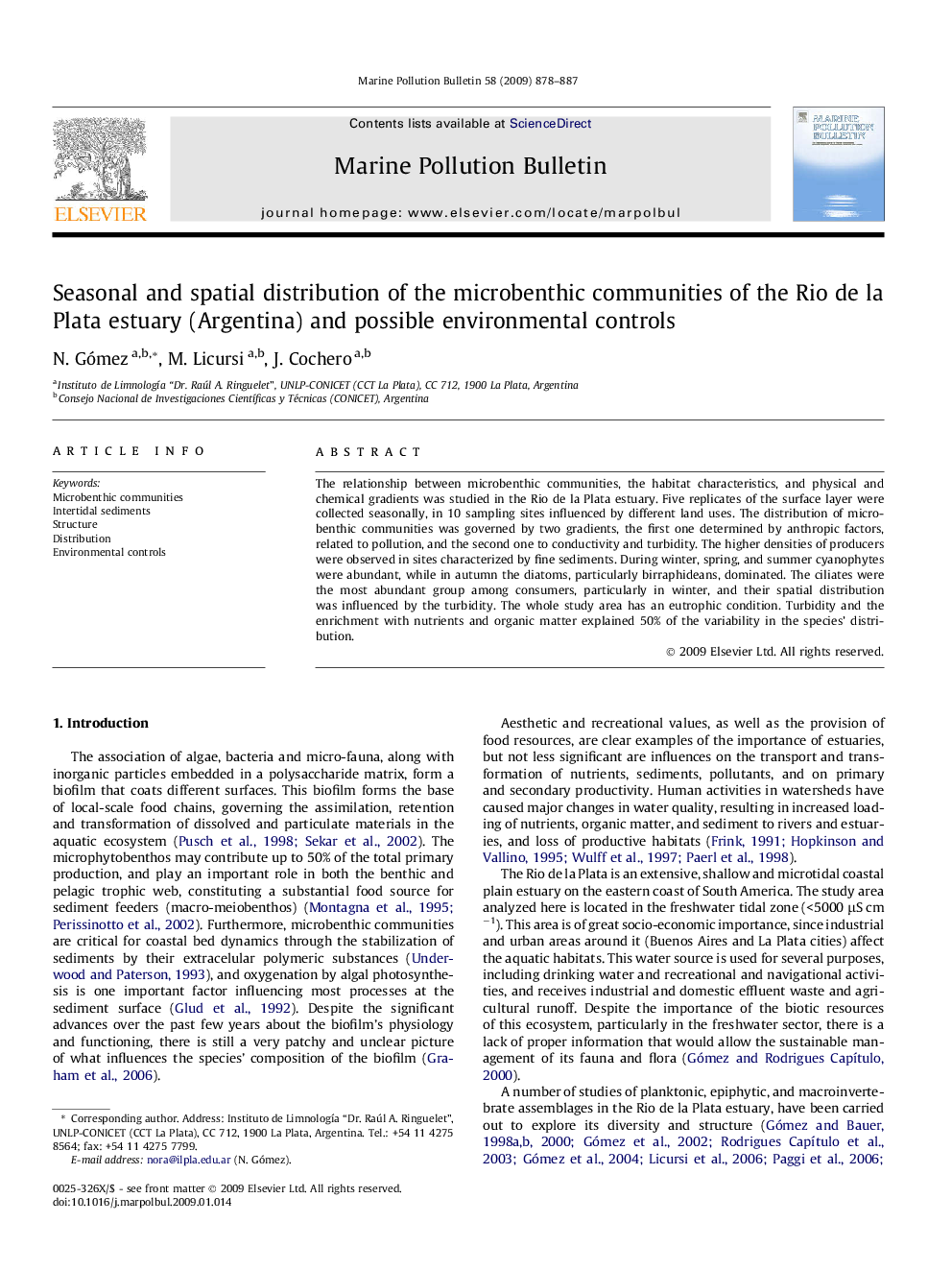| Article ID | Journal | Published Year | Pages | File Type |
|---|---|---|---|---|
| 6362909 | Marine Pollution Bulletin | 2009 | 10 Pages |
Abstract
The relationship between microbenthic communities, the habitat characteristics, and physical and chemical gradients was studied in the Rio de la Plata estuary. Five replicates of the surface layer were collected seasonally, in 10 sampling sites influenced by different land uses. The distribution of microbenthic communities was governed by two gradients, the first one determined by anthropic factors, related to pollution, and the second one to conductivity and turbidity. The higher densities of producers were observed in sites characterized by fine sediments. During winter, spring, and summer cyanophytes were abundant, while in autumn the diatoms, particularly birraphideans, dominated. The ciliates were the most abundant group among consumers, particularly in winter, and their spatial distribution was influenced by the turbidity. The whole study area has an eutrophic condition. Turbidity and the enrichment with nutrients and organic matter explained 50% of the variability in the species' distribution.
Related Topics
Physical Sciences and Engineering
Earth and Planetary Sciences
Oceanography
Authors
N. Gómez, M. Licursi, J. Cochero,
